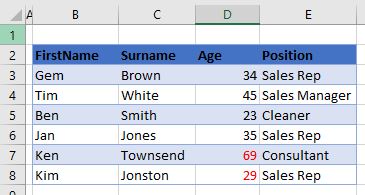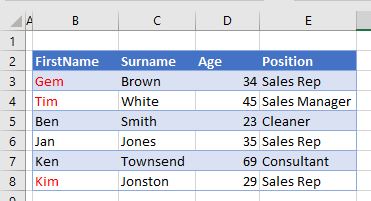VBA Wildcards
In this Article
This tutorial will demonstrate how to use wildcards in VBA.
Wildcards are used in all programming languages and database application like SQL Server. A wildcard can be defined as a symbol that is used to replace one or more characters in a text string. For example this text string – “mo*” – will find the words mom, mouse, moose, mommy etc; while this text string “mo?” will only find the word mom as the wildcard ? replaces only one character.
We use wildcards with the Like Operator which is an easier alternative to VBA Regex.
Using the Asterix (*) Wildcard in VBA
The Asterix wildcard replaces one or more characters in a VBA string.
Lets look at the following range of cells in Excel:
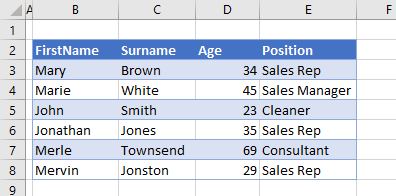
By using an Asterix wildcard in our VBA code, we can find all the Firstnames that begin with “M” and change the color of the text to red.
Sub CheckForM()
Dim x As Integer
For x = 3 To 8
If Range("B" & x).Value Like "M*" Then
Range("B" & x).Font.Color = vbRed
End If
Next x
End SubWe have therefore looped through the range and found all the first names that begin with the letter M as our wildcard string is “M*”
The result of running the code above is shown below.
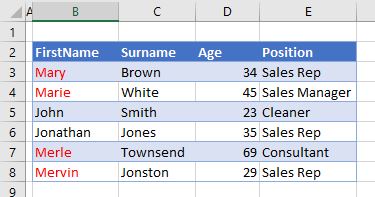
If we were to use the wildcard string “Ma*” – then only the first names in B3 and B4 would change.
Using the Question Mark (?) Wildcard in VBA
The question mark will replace a single character in a VBA string.
Consider the following data:
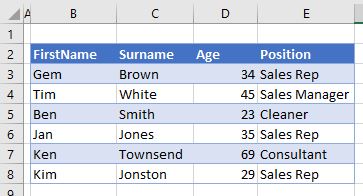
We can use the wildcard string “?im” to find any first names that end in “im”
Sub CheckForIM()
Dim x As Integer
For x = 3 To 8
If Range("B" & x).Value Like "?im" Then
Range("B" & x).Font.Color = vbRed
End If
Next x
End SubThe result of running this code is shown below:
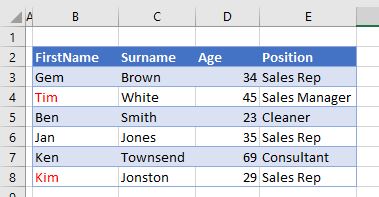
Using [char list]as a Wildcard
The example above can be modified slightly to allow us to use the question mark, in addition to a character list of allowed characters. The wildcard string can therefore be amended to “?[e-i]m” where the first character can be anything, the second character has to be a character between e and i and the last letter has to be the character “m”. Only 3 characters are allowed.
Sub CharListTest()
Dim x As Integer
For x = 3 To 8
If Range("B" & x).Value Like "?[e-i]m" Then
Range("B" & x).Font.Color = vbRed
End If
Next x
End SubThe result of this code would be:
Using the hash (#) Wildcard in VBA
The hash (#) wildcard replaces a single digit in a VBA string. We can match between 0 to 9.
Sub CheckForNumber()
Dim x As Integer, y As Integer
For x = 3 To 8
For y = 2 To 5
If ActiveSheet.Cells(x, y) Like "##" Then
ActiveSheet.Cells(x, y).Font.Color = vbRed
End If
Next y
Next x
End SubThe code above will loop through all the cells in the Range (“B3:E8”) and will change the color of the text in a cell to RED if a double-digit number is found in that cell.
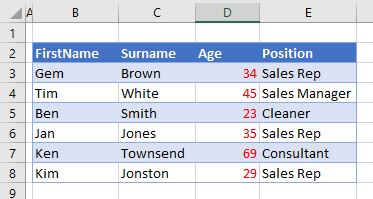
In the example below, the code will only change the number if the last number is a 9.
Sub CheckFor9()
Dim x As Integer, y As Integer
For x = 3 To 8
For y = 2 To 5
If ActiveSheet.Cells(x, y) Like "#9" Then
ActiveSheet.Cells(x, y).Font.Color = vbRed
End If
Next y
Next x
End Sub